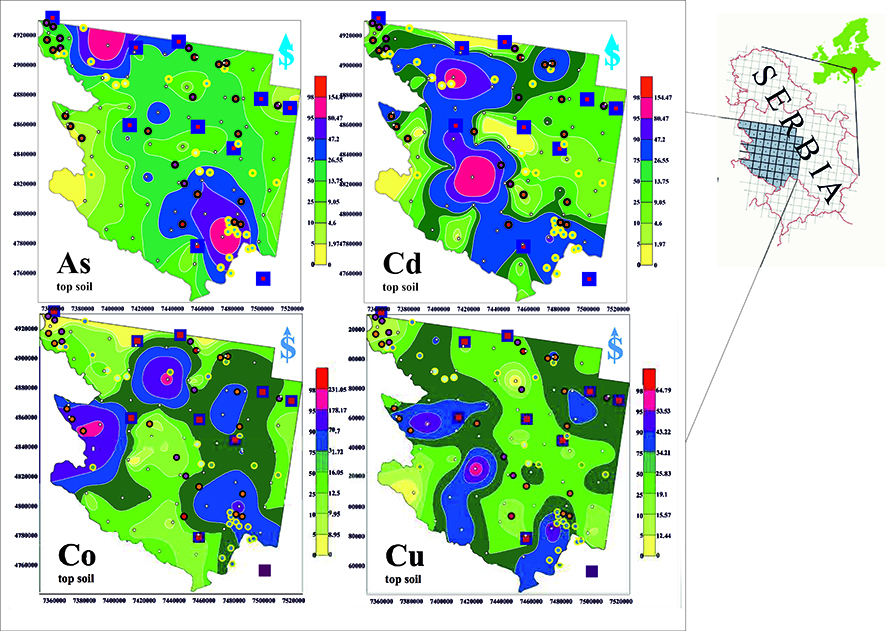Contents of potentially toxic elements in residual soils of a long-term mining region: a key study from Central and Western Serbia
DOI:
https://doi.org/10.13133/2239-1002/17042Keywords:
spatial pattern, potentially toxic elements, residual soil, natural background, cross-correlation, risk assessmentAbstract
Regional geochemical research of residual soil was conducted in an area of about 20,000 km2 in the region of Central and Western Serbia. This region has six metallogenetic zones where mining has been documented since ancient times. We study the contents, spatial pattern and natural background of potentially toxic elements (PTEs) of this mining province, to establish the geochemical background variation in the residual soil. The natural (geogenic) contents of PTEs were investigated in the top and bottom residual soil samples. Based on 108 geochemical data, the limits of natural background values (mg·kg-1) were determined by the integral method: As (38.5), Cd (0.5), Co (36.3), Cu (51.9), Cr (170.1), Hg (0.21), Mn (1974), Mo (0.9), Ni (215.2), Pb (61.7), Sb (2.4), V (84.4) and Zn (116.6). In the horizontal concentration patterns, four groups of PTEs with similar spatial distributions were identified: (As, Pb, Zn); (Cd, Hg, Mo, Sb); (Co, Cr, Ni) and (Cu, Mn, V). Correlation analysis (CA) distinguishes correlations between As- Sb, Co-Cr-Ni, and Cr-Ni. Principle component analysis indicates five different element groups: (Ni, Co, Cr, Mn); (As, Sb, Mo); (Pb, Zn); (Cu, Cd) and (Hg). Our data show that anomalous concentrations of As, Cr, Hg, Ni, Pb, Sb and Mn are geogenic, whereas higher contents of As, Hg, Pb, Sb and Zn in several locations are of a mixed geogenic and anthropogenic origin. Finally, anomalous concentrations of Pb and Zn, when detected outside the area where the ore deposits occur, are purely anthropogenic.

Downloads
Additional Files
Published
Issue
Section
License
Copyright (c) 2022 Milun Jovanovic

This work is licensed under a Creative Commons Attribution 4.0 International License.

